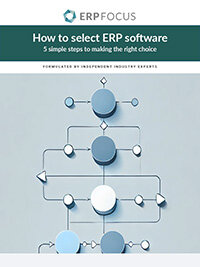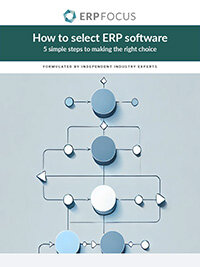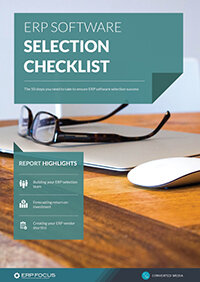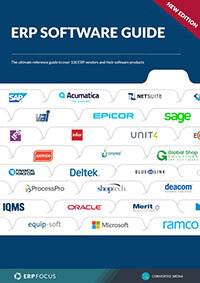Selecting ERP: Shopping for Software
Now that you’ve received official permission to purchase an ERP system, how do you go about selecting ERP? Paring down the list from two hundred plus ERP packages to something manageable is a daunting task.
The first good news is that it is improbable for all ERP packages to be equally applicable to your business and industry, so with a little bit – one to five days – of disciplined research, you should be able to cut the list by 90% (down to 15-25). Suddenly, selecting ERP is no longer an insurmountable task. This exercise also drastically increases your knowledge of the software playing field while costing you nothing. If you have a dedicated team, ask each member of the team to complete this task individually, and then do a complete join on the lists.
Start with the internet. Use search keywords like “ERP software”, “ERP database”,”ERP vendor directory”. In many cases, you will be asked for personal and company information, and you may be uncomfortable letting the world know you might be in the market for software, but you have to start somewhere. You should also search “ERP” and your industry - many vendors will target a niche industry with their software systems.
Know Your Competitors
Next, knowing what your competitors are running when selecting ERP is vital. This is for two reasons: (1) It’s a pretty good check on whether or not your pared-down list is valid (their software should be on it) and (2) you will be asked this question when you make the final recommendation for software to the executive committee.
Third, read printed material. A large amount of written information comes from the internet, but also think about trade magazines, newsletters, or white papers that are produced by thought leaders in the industry.
Lastly, network. Talk to people you have met at training classes, or conventions - they might have gone through the process of selecting erp already. Talk to your IT people; they probably already know what the best software vendors for your organization are. Talk to people you used to work with. These conversations are important, because you begin receiving two messages simultaneously – the word content of the message, which is the same as the printed word, and the tone of voice, which can range from reinforcing to contradicting the word content.
When you have assembled a list of fifteen to twenty-five companies of interest, build out an RFI (request for information). This is a formatted document that you send to each company, to acquire basic background and contact information. If you construct your RFI well, you will make selecting ERP so much easier and in many cases you can cut your list in half just based on the responses to the RFI. For instance, if a mid-size player responds that they have no implementations in your industry, or if a company is late in returning an RFI, is there a compelling reason to continue investigating them?.
After evaluating the results of the RFI, you should be able to narrow down your interest to a list of eight to twelve viable candidates. You have taken the first steps to selecting ERP, now it is time to roll up your sleeves, for the hard work is beginning.
Free white paper

How to Select ERP
Learn to select your ERP in 5 easy steps by following our expert's advice

Featured white papers
Related articles
-

ERP for Food Distributors: Key Functionality
In a modern world where products are tailored to consumers, why should ERP for food distributors ...
-

Secret KPI: Why Your ERP Implementation Team Matters More Than Software
Learn how Godlan ensures successful ERP implementation for manufacturers with proven strategies &...
-

The best ERP systems for process manufacturing
Consider these ERP systems when selecting your next process manufacturing ERP




